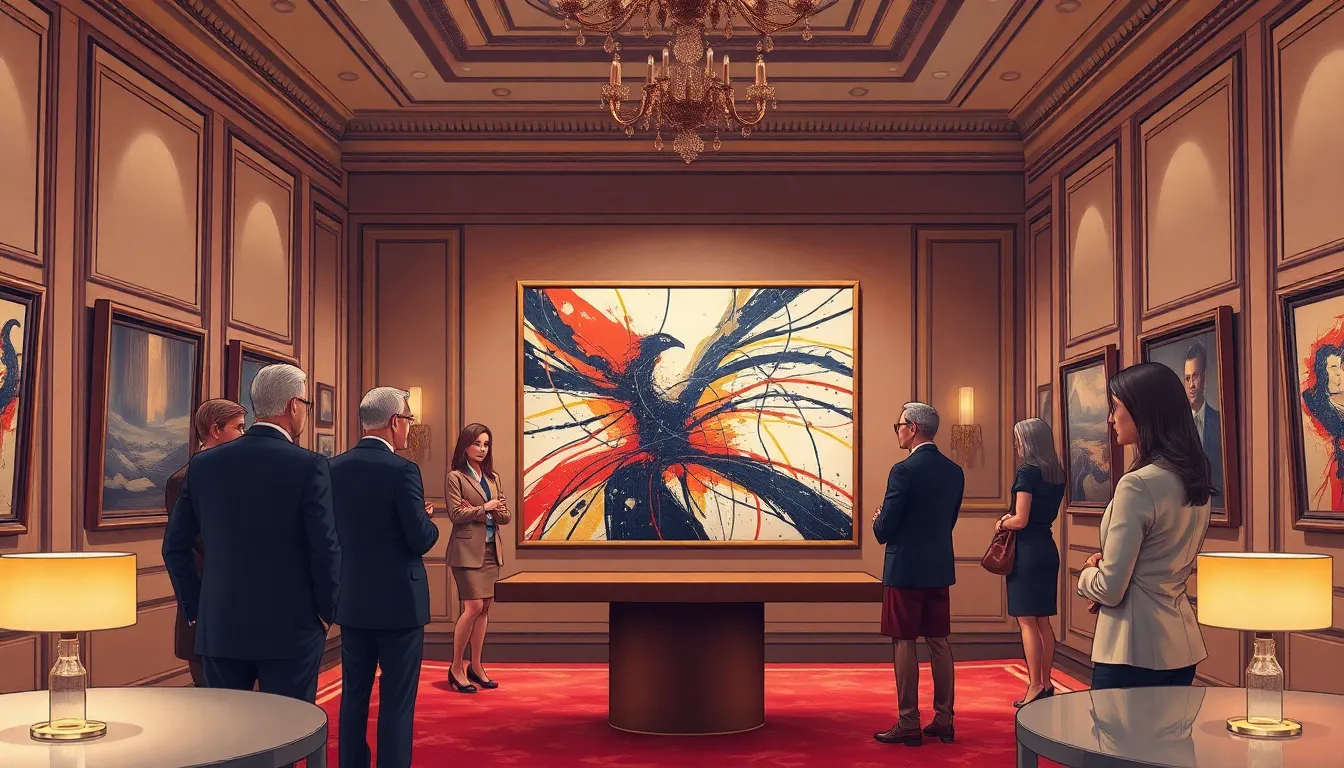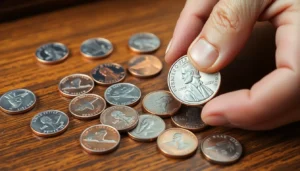Table of Contents
ToggleIn a world where a banana taped to a wall can sell for thousands, it’s clear that modern art isn’t just about aesthetics—it’s a playground for the wealthy, and sometimes, a sneaky avenue for money laundering. Picture this: a shady character strolls into a gallery, buys an abstract piece for a cool million, and suddenly, their ill-gotten gains are transformed into “legitimate” funds. It sounds like a plot twist from a heist movie, but it’s happening right under our noses.
The Rise of Modern Art Money Laundering
Modern art increasingly attracts individuals seeking to launder money. Wealthy collectors often purchase high-value pieces, disguising the source of their funds. Art offers a unique advantage due to its subjective valuation. Galleries and auction houses sometimes lack rigorous oversight, creating opportunities for illicit activities.
The market’s opacity facilitates the movement of money. Buyers can pay exorbitant prices for artworks without transparent appraisal processes. Anonymity in transactions further shields the identities of those involved. In some cases, art pieces sell for millions despite limited artistic merit, reflecting their role as status symbols rather than genuine artistic expressions.
High-profile scandals reveal the extent of money laundering. Reports indicate that over $6 billion is laundered through art each year. Cases involving shell companies and secretive buyers illustrate how easily art can mask financial misdeeds. Lawyers and investigators contend that without stricter regulations, this practice could flourish unchecked.
Public interest in modern art continues to rise, intensifying scrutiny of the sector. Increasingly, regulatory bodies are considering measures to combat financial crimes. Establishing clear guidelines can enhance transparency in art transactions. Auction houses and galleries face pressure to adopt anti-money laundering practices, ensuring that the market isn’t just a haven for the wealthy.
Legitimate art investment relies on authenticity and provenance. The art world must address these challenges to restore confidence and integrity. As money laundering persists, examining the interplay between art and finance becomes essential.
Methods Used in Modern Art Money Laundering

Art transactions often exploit loopholes, with various methods employed to launder money through modern art. Buyers capitalize on the lack of transparency in the market.
Overvalued Art Sales
Overvalued art sales represent a common tactic for laundering funds. Prices frequently exceed inherent value, allowing individuals to obscure the origins of their money. Wealthy collectors may purchase works at inflated prices, masking illicit funds as legitimate investments. Auction houses often facilitate this by highlighting the exclusivity of pieces, contributing to price inflation. For instance, a piece bought for $1 million might sell for $10 million through a series of private transactions, making financial irregularities difficult to trace. The subjective nature of art valuation further complicates oversight, encouraging speculation and allowing vast sums to change hands under questionable circumstances.
Fake Art and Forgery
Fake art and forgery significantly impact laundering operations in the art world. Criminals produce replicas of famous artworks to sell at high prices, concealing the true nature of their transactions. They exploit buyers’ lack of expertise, presenting forged pieces as authentic, which dilutes provenance checks. Individuals often establish shell companies to facilitate these sales, ensuring anonymity during transactions. High-profile cases reveal how forgers can generate substantial profits while evading detection. Previous incidents demonstrate that even renowned collectors can inadvertently purchase forgeries, underscoring the risks involved. As authenticating art grows more complex, these scams continue to evolve, complicating the landscape of financial crime in the industry.
Notorious Cases of Modern Art Money Laundering
Noteworthy incidents highlight the intersection of art and illicit finance. Certain auctions serve as prime examples of how high-value art transactions can obscure the origins of wealth.
High-Profile Auctions
Christie’s and Sotheby’s auctions often attract buyers willing to pay millions. High-profile sales include pieces that fetch prices far beyond their market value, raising eyebrows regarding legitimacy. Anonymity plays a significant role, as buyers frequently utilize shell companies, further concealing their identities. In 2017, a painting sold for $450 million, signaling how such eye-popping prices can facilitate money laundering. These events reveal a pattern where the art world provides a cover for individuals attempting to legitimize shady financial dealings.
Criminal Organizations Involved
Criminal networks also exploit the art market to launder money. Reports indicate that various organizations, including drug cartels and human trafficking rings, use art as a mechanism to cleanse illicit funds. Certain cases showcase how criminals buy artworks with cash or through complex transactions, thereby bypassing traditional banking systems. Investigations have uncovered that over $6 billion laundered through art each year partly involves these groups. As more schemes emerge, scrutiny of such operations intensifies among law enforcement agencies.
Legal Implications and Challenges
Modern art’s role in money laundering raises significant legal questions. Regulatory bodies find current measures insufficient in tackling the complexities of art transactions.
Current Regulations
Current regulations lack the rigor needed for effective oversight of art sales. The Financial Action Task Force provides guidelines yet many galleries and auction houses do not fully comply. Anti-money laundering laws exist, but gaps remain, leaving room for exploitation. Transparency requirements often do not extend to private sales, enabling buyers to bypass crucial scrutiny. Inconsistent enforcement further complicates the legal landscape, allowing illicit transactions to persist.
Need for Reform
Reform emerges as essential for addressing vulnerabilities in the art market. Clear and enforceable guidelines can enhance transaction transparency. Stakeholders must prioritize authenticity verification to combat forgery and overvaluation. Governments and regulatory agencies need to establish a unified approach to reporting suspicious activity. Industry-wide collaboration can foster a safer environment, ultimately preserving the integrity of legitimate art transactions. Enhanced training for art market professionals ensures that they recognize and report potential laundering activities effectively.
The intertwining of modern art and money laundering reveals a complex and troubling dynamic. As the art market continues to flourish, the potential for abuse grows alongside it. The lack of oversight and transparency creates fertile ground for illicit activities, allowing criminals to exploit the system with relative ease.
Addressing these challenges is crucial for preserving the integrity of the art world. Implementing stricter regulations and enhancing scrutiny can help mitigate the risks associated with money laundering. The art community must prioritize authenticity and provenance to ensure that art remains a legitimate and respected investment. As awareness increases, stakeholders must collaborate to foster a more transparent and accountable environment, safeguarding the future of modern art from financial crime.






